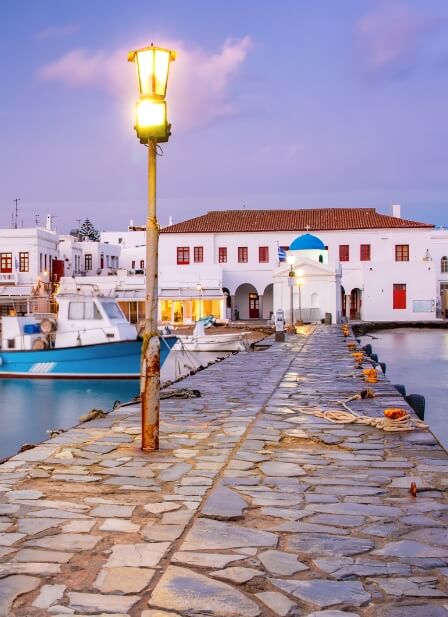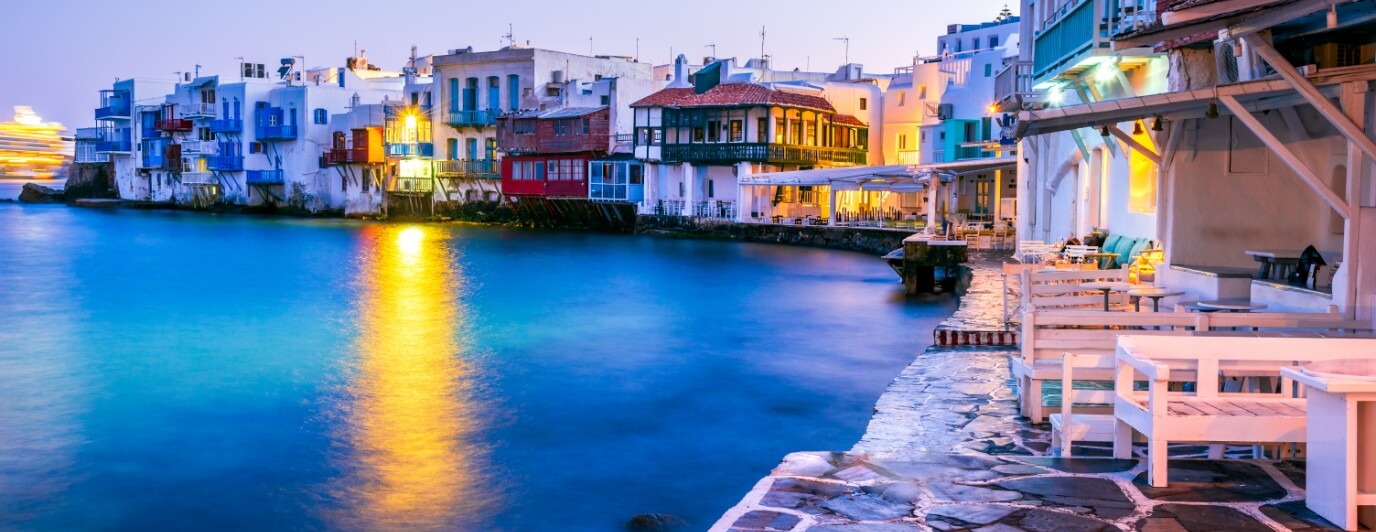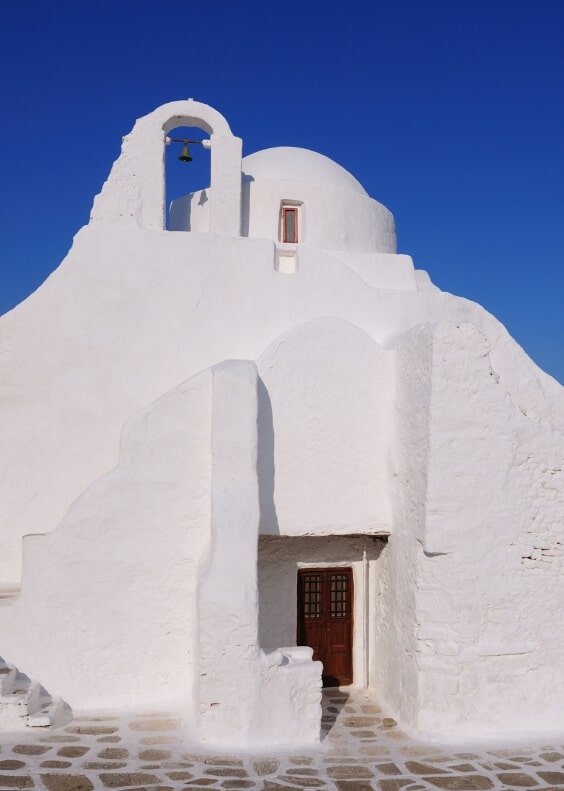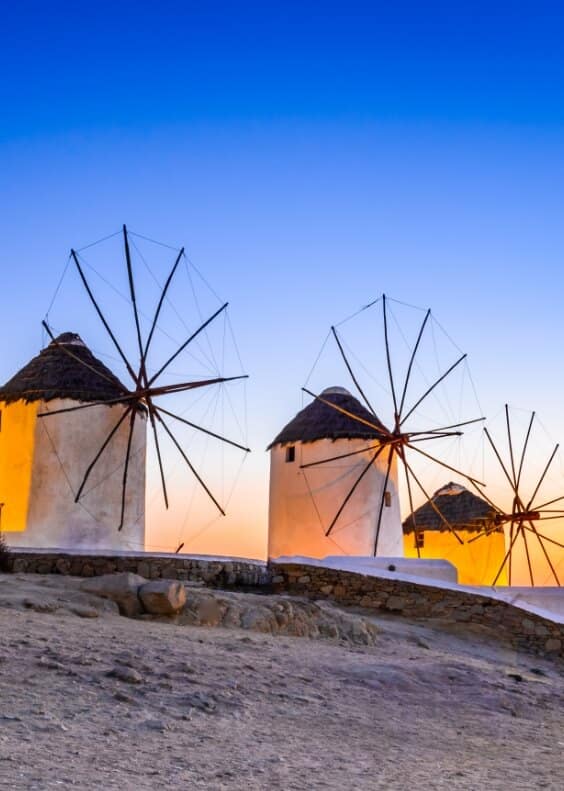Mykonos Sights
Explore Mykonos island’s sights, including archaeological, religious, and historical monuments, windmills, beaches, and picturesque villages and settlements.
The Town Hall
The Town Hall, built around 1780, is an early neoclassical two-story building with a tile roof. It was constructed following the 1760-1774 conflict between Russia and the Ottoman Empire to house the Russian Consul General of the Archipelago.
A few years later, it came under the jurisdiction of the “Koinotita” (the local self-governing body during the Greek revolution), and it has since served as the office of the Municipality of Mykonos.
The Public Library
In addition to approximately 10,000 volumes (the majority of which belong to the historical collection donated by Alex. Meletopoulos), the library houses a large collection of photographs, various 18th and 19th-century documents, engravings, and more. It is located in the square beside the church of Agia Kyriaki, on the ground floor of a marvelous 18th-century mansion.
Little Venice
Little Venice is the vibrant neighborhood between Castro and Scarpa, with wooden balconies “hanging” above the sea. Here, one can enjoy one of the most beautiful sunsets in Greece.


Drafaki, Vrisi, Glastros, Platis Gialos
Interesting small monuments are scattered across rural areas in the south of Chora. In Drafaki (Paspari), you can find very old but well-preserved flat-roofed chapels. In Vrisi, a few years ago, an unusual vaulted tomb from the Mycenaean period was discovered—an exceptional find for the Cyclades. The tomb’s rich and intriguing contents attest to the island’s special connections with the Mycenaean centers of mainland Greece. In the same area, you’ll find magnificent dovecotes inside old gardens, featuring characteristic decoration.
In the Mykonian countryside, ruins of ancient square or round towers still stand, remnants of the island’s defense system. The tower in Lino, with a diameter of approximately 10 meters, maintains its base at a height of about 1.80 meters, with traces of a fortified enclosure and two nearby early Christian buildings. The tower at Portes, which overlooks Platis Gialos, is smaller in diameter (3.5 meters) but impresses with its preserved portico formed by three large carved granite stones.
There are also ancient wells still in use, such as the well of “Giannaros.” This underground tank, built with granite blocks, features a staircase for descending into the water. Another well, the “Pouados,” with steps on the side for easier access, is preserved beneath the Tourlos–Korfos ring road, near the Tagoo area.


Kalafati – Divounia
Northeast of Ano Mera, opposite the beach of Kalafati at Divounia–Tarsanas, traces of a prehistoric (Protocycladic era) acropolis are preserved on a small twin cape.
Kato Milli
The famous “Windmills” are located south of Chora (Mykonos Town), between the picturesque Alefkandra and Neochori. These all-white, imposing structures stand in a row, facing the sea and impressing visitors with their massive presence. Today, seven of the original ten windmills are preserved. Until the early 20th century, these mills ground local wheat using the constant power of the wind. The Mykonian windmills, in conjunction with the island’s many bakeries, played a crucial role in the local economy. Mykonos became a necessary stop for ships in the Aegean, provisioning them with paximadi (ship’s biscuit). The “Bakery of Yiora” in Neochori, with its wood-burning oven, is a working example of the bakeries of that time.
The Three Wells
In the center of modern-day town, in an area known as “Tria Pigadia” (Three Wells), stand the three wells that served as the main water supply for Mykonos Chora from the mid-18th century until 1956.
